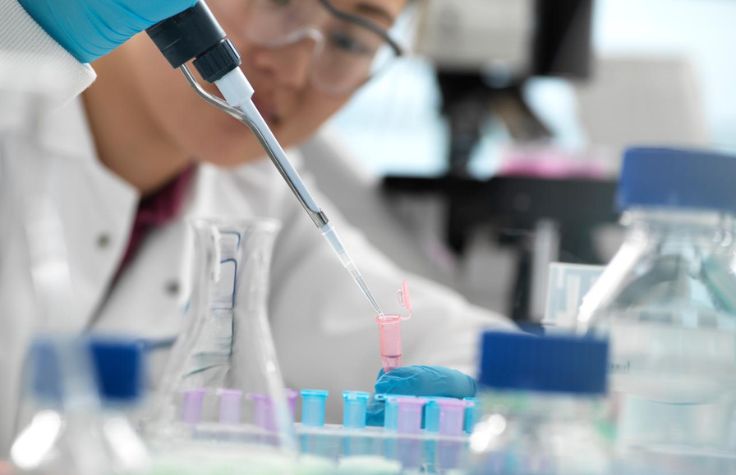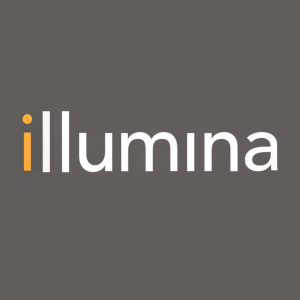The Growing Case for Whole-Genome Sequencing in All Blood Cancers
Illumina has demonstrated the effectiveness of Whole-Genome Sequencing (WGS) in blood cancer diagnostics through a comprehensive study. The research evaluated WGS performance in identifying variants specific to Acute Myeloid Leukemia (AML), achieving 100% sensitivity including hard-to-find mutations. The study, conducted at Illumina Laboratory Services, achieved a five-day turnaround time and demonstrated a 95% detection rate at 5% variant allele frequency with 140× coverage.
The company's WGS method utilizes their DRAGEN software and will expand Connected Insights functionality in early 2025 to include automated risk stratification for AML samples. This advancement offers a significant improvement over conventional diagnostic methods, which often require multiple tests and have detection capabilities.
Illumina ha dimostrato l'efficacia del Sequenziamento dell'Intero Genoma (WGS) nella diagnosi dei tumori ematici attraverso uno studio completo. La ricerca ha valutato le performance del WGS nell'identificare varianti specifiche per la Leucemia Mieloide Acuta (AML), raggiungendo una sensibilità del 100%, includendo mutazioni difficili da trovare. Lo studio, condotto presso i Servizi di Laboratorio Illumina, ha ottenuto un tempo di risposta di cinque giorni e ha dimostrato un tasso di rilevamento del 95% a una frequenza allelica di variante del 5% con una copertura di 140×.
Il metodo WGS dell'azienda utilizza il software DRAGEN e amplierà la funzionalità di Connected Insights all'inizio del 2025 per includere la stratificazione automatizzata del rischio per i campioni di AML. Questo avanzamento rappresenta un miglioramento significativo rispetto ai metodi diagnostici convenzionali, che spesso richiedono più test e hanno capacità di rilevamento inferiori.
Illumina ha demostrado la efectividad de la Secuenciación del Genoma Completo (WGS) en el diagnóstico de cánceres hematológicos a través de un estudio integral. La investigación evaluó el rendimiento del WGS en la identificación de variantes específicas de la Leucemia Mieloide Aguda (LMA), alcanzando una sensibilidad del 100%, incluyendo mutaciones difíciles de encontrar. El estudio, realizado en los Servicios de Laboratorio de Illumina, logró un tiempo de respuesta de cinco días y demostró una tasa de detección del 95% a una frecuencia alélica de variante del 5% con una cobertura de 140×.
El método WGS de la compañía utiliza su software DRAGEN y ampliará la funcionalidad de Connected Insights a principios de 2025 para incluir la estratificación de riesgo automatizada para muestras de LMA. Este avance ofrece una mejora significativa en comparación con los métodos de diagnóstico convencionales, que a menudo requieren múltiples pruebas y tienen capacidades de detección limitadas.
Illumina은 포괄적인 연구를 통해 혈액암 진단에서 전체 유전체 분석(WGS)의 효과를 입증했습니다. 이 연구에서는 급성 골수성 백혈병(AML) 특이 변이들을 식별하는 WGS의 성능을 평가하였으며, 발견하기 어려운 돌연변이를 포함해 100%의 민감도를 달성했습니다. Illumina 실험실 서비스에서 수행된 이번 연구는 5일의 반응 시간을 달성하였고, 5% 변이 대립 유전자 빈도에서 95%의 검출률과 140배의 커버리지를 보여주었습니다.
회사의 WGS 방법은 DRAGEN 소프트웨어를 활용하며, 2025년 초에는 AML 샘플에 대한 자동 위험 계층화를 포함하도록 Connected Insights 기능을 확장할 예정입니다. 이 발전은 종종 여러 검사가 필요하고 검출 능력이 제한적인 기존 진단 방법에 비해 상당한 개선점을 제공합니다.
Illumina a démontré l'efficacité du séquençage de génome entier (WGS) dans le diagnostic des cancers du sang grâce à une étude complète. La recherche a évalué les performances du WGS pour identifier des variants spécifiques à la leucémie myéloïde aiguë (LMA), atteignant une sensibilité de 100% y compris des mutations difficiles à détecter. L'étude, menée au sein des Services de laboratoire d'Illumina, a atteint un délai de réponse de cinq jours et a montré un taux de détection de 95% à une fréquence d'allèle de variant de 5% avec une couverture de 140×.
La méthode WGS de l'entreprise utilise leur logiciel DRAGEN et élargira la fonctionnalité de Connected Insights début 2025 pour inclure la stratification automatisée du risque pour les échantillons de LMA. Cette avancée offre une amélioration significative par rapport aux méthodes de diagnostic conventionnelles, qui nécessitent souvent plusieurs tests et ont des capacités de détection limitées.
Illumina hat die Wirksamkeit der Whole-Genome-Sequencing (WGS) in der Blutkrebsdiagnostik durch eine umfassende Studie nachgewiesen. Die Forschung bewertete die WGS-Performance bei der Identifizierung von spezifischen Varianten für die akute myeloische Leukämie (AML) und erzielte eine Sensitivität von 100%, einschließlich schwer auffindbarer Mutationen. Die Studie, die bei Illumina Laboratory Services durchgeführt wurde, erreichte eine Durchlaufzeit von fünf Tagen und demonstrierte eine Nachweisrate von 95% bei einer Variantenallelfrequenz von 5% mit 140× Abdeckung.
Die WGS-Methode des Unternehmens nutzt die DRAGEN-Software und wird die Funktionalität von Connected Insights Anfang 2025 erweitern, um eine automatisierte Risikostratifizierung für AML-Proben einzuführen. Dieser Fortschritt stellt eine erhebliche Verbesserung gegenüber herkömmlichen diagnostischen Methoden dar, die häufig mehrere Tests erfordern und über begrenzte Nachweisfähigkeiten verfügen.
- Achieved 100% sensitivity in detecting mutations, including critical FLT3-ITD variants
- Demonstrated 95% detection rate at 5% variant allele frequency
- Reduced turnaround time to 5 days compared to longer conventional testing
- Medicare approved Washington University's WGS test for blood cancers in August 2023
- None.
Insights
NORTHAMPTON, MA / ACCESSWIRE / December 12, 2024 / Illumina
The comprehensive method provides improved detection and greater insight on the complex disease that impacts millions of people worldwide
Originally published on Illumina News Center
The Leukemia & Lymphoma Society estimates that by year end, 2024 will have seen 187,740 Americans diagnosed with a blood cancer-or about one person every three minutes.
This unfortunate statistic belies the difficulty of arriving at a diagnosis and treatment. Current conventional diagnostic workflows use multiple lab technologies, such as karyotyping, fluorescence in situ hybridization, microarrays, gene panels, and PCR testing.The process is complex, the technology is limited, and the results can be conflicting.
With unprecedented sensitivity and accuracy, whole-genome sequencing (WGS) can detect variants and biomarkers that are critical for prognosis, risk stratification, and treatment decisions.
"Sequencing technology has really improved clinical outcomes in terms of risk stratification and diagnostic decisions for cancer," says Illumina bioinformatician Weida Gong. "For acute myeloid leukemia, or AML, in particular, sequencing is essential because the mutational profile may change a doctor's treatment decisions." Some mutational patterns more significantly impact how the disease progresses, and if these mutations or abnormalities go undetected, patients suffer lower survival rates.
The standard of care for bone marrow or blood cancer patients often involves multiple tests. "Conventionally, physicians have been using karyotyping or cytogenetics to profile just the genomic abnormality for hematology patients," Gong says. Unfortunately, these methods cannot provide a high-resolution picture of the disease. Cytogenetics may only detect chromosomal aberrations larger than five megabases (5 million genetic base pairs). Hematology patients, Gong explains, can have mutations that affect just one or a few base pairs-small insertions or deletions (indels) far from the megabase scale. Standard testing misses this important information that impacts diagnosis, risk stratification, and treatment.
Last month at the American Society of Human Genetics (ASHG) annual meeting in Denver, Gong presented a poster on a study evaluating the analytical performance of WGS (limit of detection, sensitivity, specificity, and reproducibility) in identifying somatic small variants, structural variants (SV), and copy number alterations (CNA) specific to AML, in a cohort of AML patients. (Illumina coauthor Guidantonio Malagoli Tagliazucchi had just presented the same poster at the European Society for Medical Oncology annual meeting in September.)
The researchers used a combination of 23 clinical samples from collaborators at Washington University School of Medicine in St. Louis, plus a cohort of 30 AML clinical samples from Discovery Life Sciences, and more than 500 samples, including both cell lines and clinical samples, from their in-house development and optimization work with the assay. They processed these samples with Illumina DNA PCR-Free Prep, sequenced them with the NovaSeq 6000 System with S4, and used the DRAGEN version 4.2 secondary analysis heme pipeline to compare variants detected from WGS.
The demonstration study compared the data from Illumina's WGS workflow with reference sets from Washington University and Discovery Life Sciences. Overall, they found an improved and more complete picture of each tumor, and the new data provided greater insights.
"When you look at AML patients, there are mutations that have low variant allele frequency [VAF], from
"The sensitivity was
The study was performed at Illumina Laboratory Services in San Diego, where the workflow is end-to-end from extraction to the downstream bioinformatics pipeline. Thanks in part to this setup, they were able to achieve a total turnaround time of five days. "This is very important, especially for the case of tumor diagnosis. Time is essential," Gong says. Conventional testing is often iterative and requires multiple steps and procedures. "Some tests, like qPCR, can be very fast, returning results in two or three days-but they only look for specific mutations. And the other tests take much longer.
"WGS is definitely very sensitive and we don't need to apply multiple different technologies to profile the genetic risk for AML patients," says Gong. "Whole-genome sequencing is a one-stop shop."
Illumina has developed a tumor-only, high-coverage WGS method and bioinformatics pipeline, based on its DRAGEN software, to better characterize hematological malignancies for research use. Illumina is the only sequencing company that provides all the components to do WGS heme testing across library prep, sequencing, secondary analysis, and interpretation.
The DRAGEN heme solution is integrated with Illumina Connected Insights to prioritize, interpret, and report on key variants for clinical researchers. Connected Insights includes a powerful tool kit with integrated knowledge sources, automated variant classification, comprehensive visualizations, and extensive filtering options. In early 2025, Illumina will expand Connected Insights' functionality to include automated risk stratification for AML samples (according to World Health Organization and European LeukemiaNet guidelines for 2022), with transparent logic and evidence display. Thanks to the software's automated data transfer and analysis launch, researchers will be able to implement a "no touch" automated complete solution, from sequencing to draft research report, and enjoy new efficiencies in heme WGS analyses.
Industry leaders understand the power of WGS to provide a comprehensive genomic characterization for hematologic malignancies, well beyond what cytogenetics applications can achieve. In August 2023, Medicare approved Washington University's WGS test for blood cancers, called ChromoSeq. Yet wider implementation of WGS-even for AML, where its value has been reported-remains a challenge for health care systems.
"There is a lot of interest," Gong says. "Regarding the utility of WGS, the sky is the limit."
To learn about the Illumina heme WGS interpretation solution, click here.
To read about applications of WGS in hematologic malignancies, click here.
To see a demonstration of the DRAGEN bioinformatics pipeline for heme WGS, please contact dragen-info@illumina.com.

PHOTO: Andrew Brookes
View additional multimedia and more ESG storytelling from Illumina on 3blmedia.com.
Contact Info:
Spokesperson: Illumina
Website: https://www.3blmedia.com/profiles/illumina
Email: info@3blmedia.com
SOURCE: Illumina
View the original press release on accesswire.com








